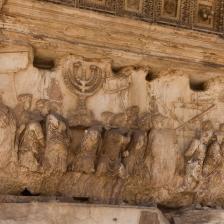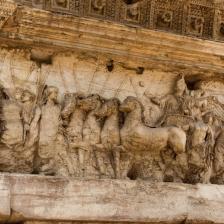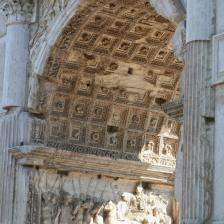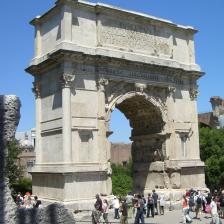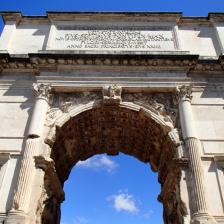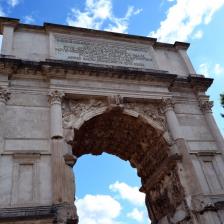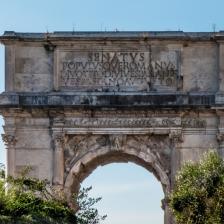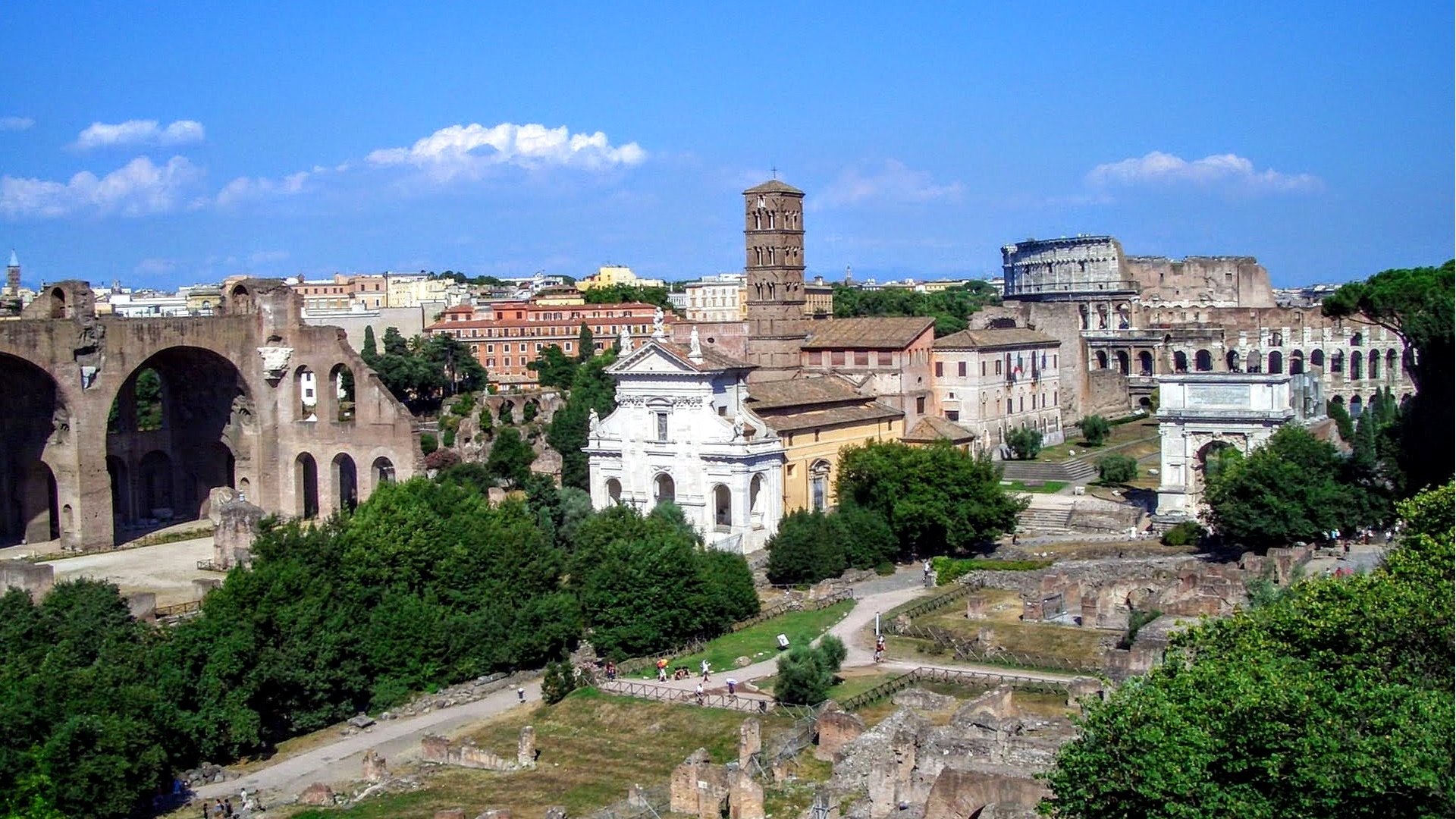
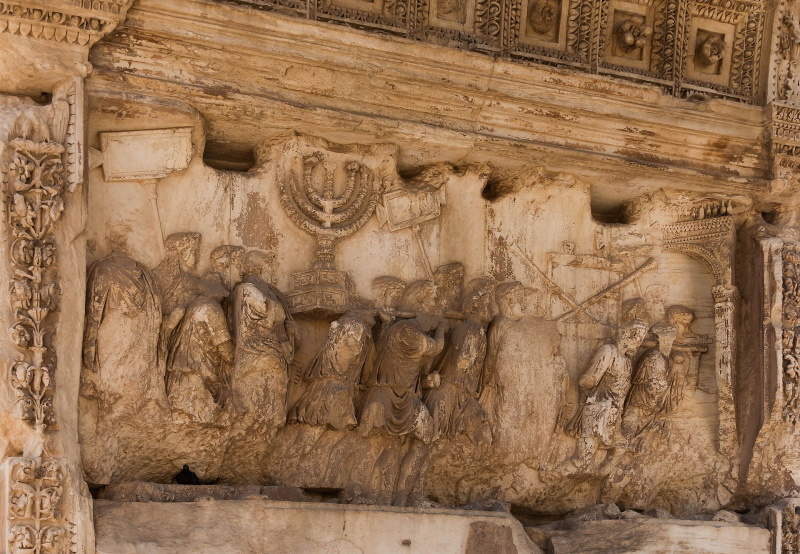
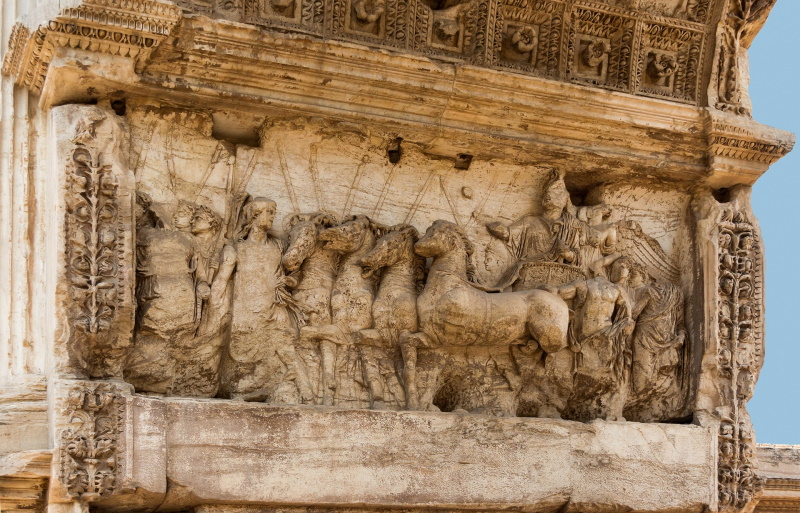
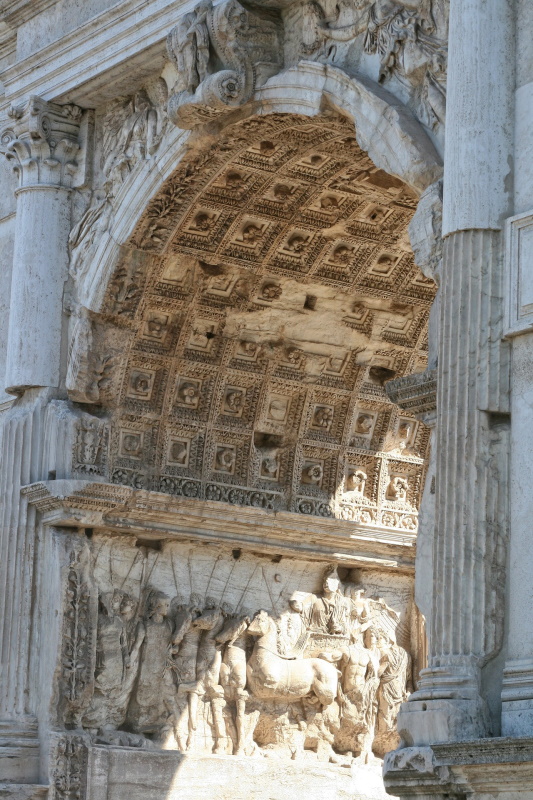
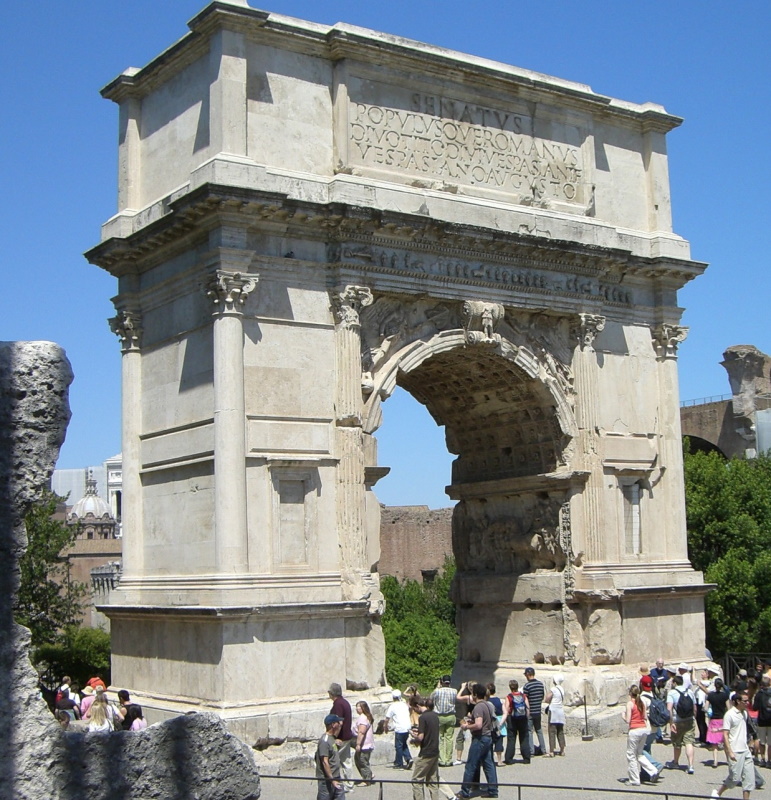
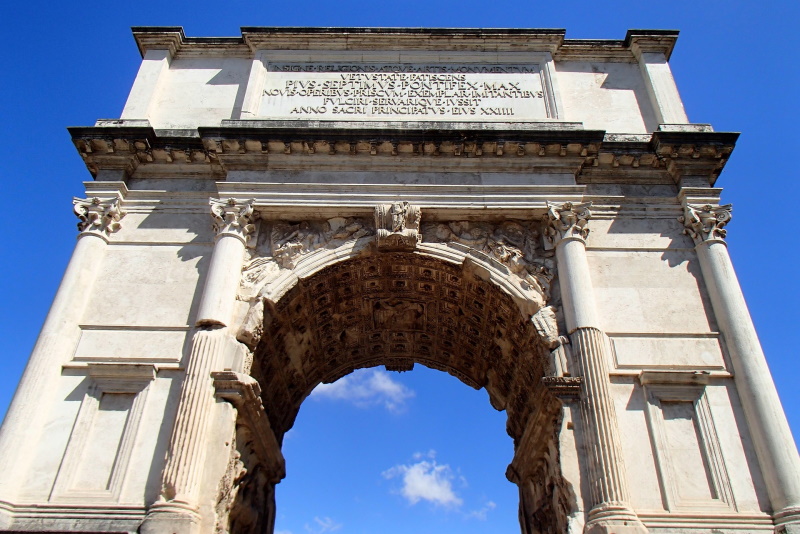
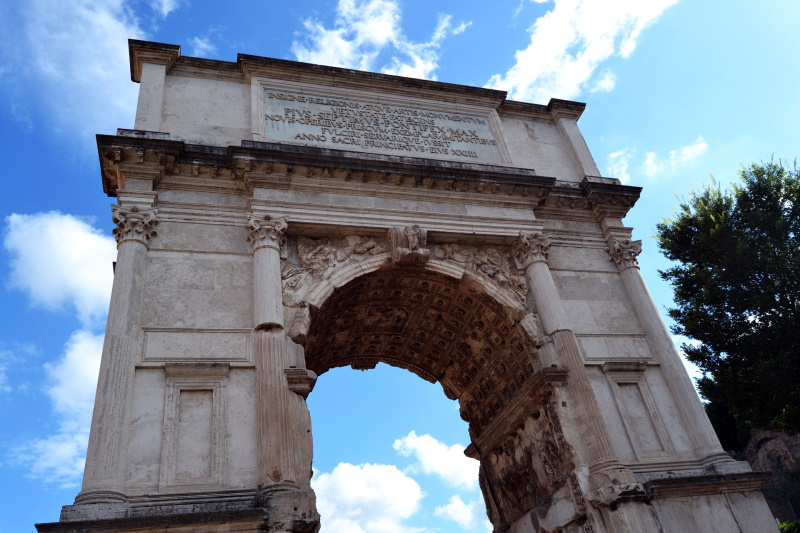
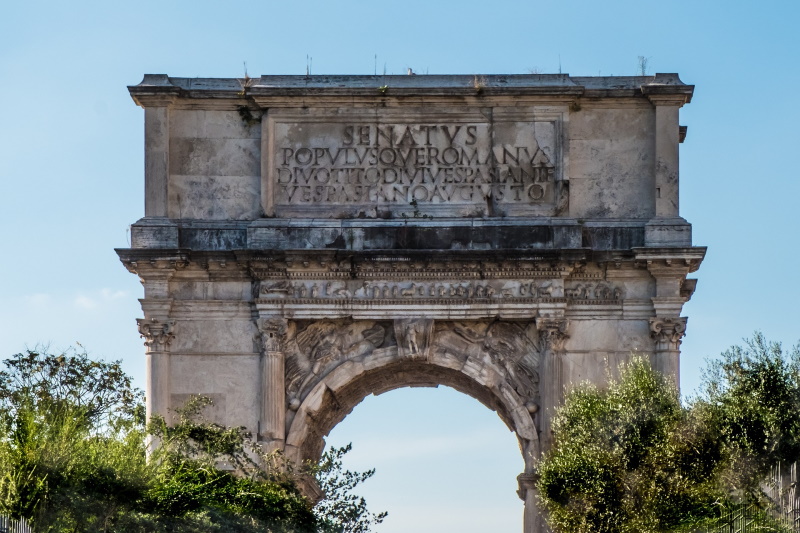
«SENATUS POPULUSQUE ROMANUS DIVO TITO DIVI VESPASIANI F(ILIO) VESPASIANO AUGUSTO,» or, «The Senate and the Roman people to the divine Titus, son of the divine Vespasian, Vespasian Augustus.»
Facing the Flavian Amphitheater, the dedication carved on the attic of the Arch of Titus, the triumphal monument built in his memory by his brother Domitian, the last emperor of the Flavian dynasty, celebrates his success in Galilee in 70 AD. and the destruction of Jerusalem.
Located at the top of the Via Sacra, inside the Roman Forum and a few steps from the Colosseum, one of the world's most visited tourist destinations, the arch has a height of 15.40 meters, a width of 13.50 meters and a depth of 4.75. Covered in Greek Pentelic marble and finely decorated, it has a single arch; it is smaller and more modest than the Arch of Constantine and that of Septimius Severus, but its history is just as impressive.
In the center of the beautiful coffered vault is a relief showing the apotheosis of Titus on an eagle ascending to the sky to be welcomed into the Gods' world.
Outside, the small continuous frieze placed under the attic represents the triumphal procession and overlooks the two winged Victories in the archivolts. In the keystones, however, the personifications of the Goddess Rome and the Genius of the Roman people are depicted.
Two large relief panels - 2.04 meters high by 3.85 meters long - decorate the inside of the arch, illustrating the central moments of Titus's triumph. In one, the sovereign is in the imperial quadriga driven by the goddess Roma and crowned by the winged Victory behind him; in the other, the soldiers carry the spoils of war: the silver trumpets, the table of the Ark of the Covenant, and the Menorah, the seven-branched candlestick.
Precisely because of the the candelabrum, the arch was called the "Portico delle Sette Lucerne" in the Middle Ages.
At that time, it was incorporated into the fortress of the Frangipanes, a powerful Roman family, and surmounted with brick battlements.
During their pontificate, Paul II and Sixtus IV undertook the first restoration works, which, over the centuries, led the arch to take on its present appearance.
The first restoration saw the demolition of the medieval buildings that trapped it and the construction of a buttress. The arch, later incorporated into the convent of Santa Francesca Romana, the ancient Santa Maria Nova, was restored in 1716 during the pontificate of Clement XII. Between 1821 and 1823, the Arch of Titus was dismantled to a design by Raffaele Stern and Giuseppe Valadier. The latter restored it by repairing the parts worn by time with travertine, as the inscription on the attic facing the Roman Forum recalls. Between 1901 and 1902, the street level lowered to reveal the foundations.
Arch of Costantine
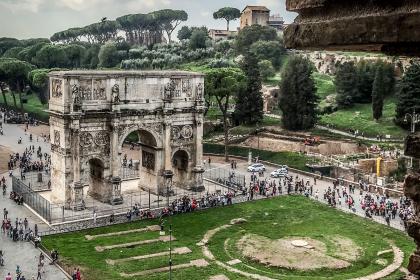
 Condividi
Condividi
The Flavian Amphitheatre (The Colosseum)

 Condividi
Condividi
The Roman Forum and the Palatine
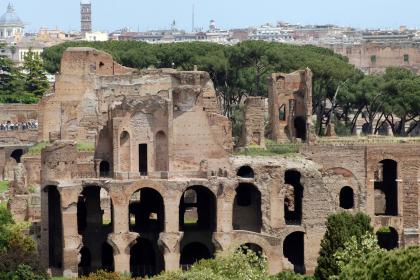
 Condividi
Condividi
Information
 Condividi
Condividi
Location
To find out about all accessibility services, visit the Rome accessible section.












































